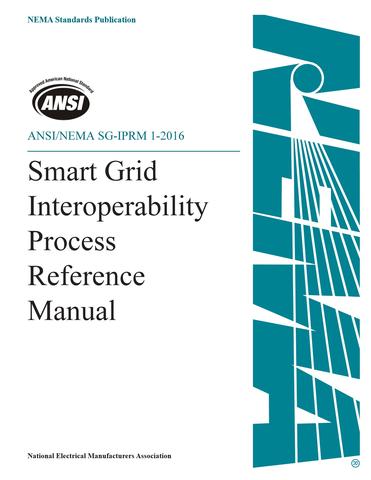Taking Measure
Just a Standard Blog

When I go home after work, my wife and I are typically focused on the present moment, especially on our young son. As new parents, we benefit from many innovative products and services—from improved car seats and creative toys to safer cribs and video baby monitors. One of the first products that we bought for our son’s nursery was a Wi-Fi-based baby monitor. When we brought it home and plugged it in, it connected effortlessly with our Wi-Fi router and smart phones. It helps provide safety and security—and, perhaps most importantly, sleep—for the three of us.
As consumers, we just assumed that these “Wi-Fi Certified” products would be “interoperable”—that the many different devices and components in the Wi-Fi universe would work together seamlessly. But as a NIST employee, I realize that this interoperability doesn’t happen by magic. Underlying the millions of products that today carry the “Wi-Fi Certified” label is a complex and robust ecosystem of manufacturers, standards organizations, testing laboratories, and certification authorities.
Thanks to that Wi-Fi baby monitor, I return each morning to NIST refreshed (at least, as refreshed as a new parent can be). During a typical day at NIST, my colleagues and I are focused on the future. We’re part of a broad network of scientists and engineers—in industry, academia, and government—who are working to advance the smart electric grid of the 21st century. In particular, I am engaged in developing a framework for smart grid testing and certification that will enable the diverse technologies developed by others to work together smoothly, sustainably, and safely.

One important milestone in building the testing and certification ecosystem for the smart grid is this month’s publication of a new standard, the Smart Grid Interoperability Process Reference Manual, ANSI/NEMA SG-IPRM 1-2015 (IPRM). Under the “Energy Independence and Security Act of 2007 (EISA),” NIST was assigned the “primary responsibility to coordinate development of a framework that includes protocols and model standards for information management to achieve interoperability of Smart Grid devices and systems…”
In order to fulfill the EISA mandate, NIST developed a three-phase plan:
- To engage stakeholders in a public process to identify applicable smart grid standards and gaps, and coordinate the development of a smart grid framework and roadmap to accelerate smart grid standards development;
- To establish a public-private partnership and forum to drive longer-term progress and sustain development of the many additional standards that will be needed; and
- To coordinate development of a framework for testing and certification to support industry implementation of smart grid devices, systems, and processes.
(For a more thorough description of our three-phase approach, see the NIST Framework and Roadmap for Smart Grid Interoperability Standards, Release 3.0 and its accompanying Beginner’s Guide.)
In November 2009, NIST launched the Smart Grid Interoperability Panel (SGIP), a public-private partnership that brought together stakeholders from across the electric industry. One of the first standing committees established within the SGIP was the Smart Grid Testing and Certification Committee (SGTCC), on which I serve as vice chair. The committee is responsible for constructing an operational framework for the testing and certification process that will, ultimately, support smart grid interoperability.
The SGTCC’s vision for the smart grid testing and certification ecosystem is embodied in a document we’ve developed and refined over the past six years, the Interoperability Process Reference Manual (IPRM). The IPRM standard defines a process by which industry stakeholders may procure, test, and assert interoperability between disparate vendors of smart grid products built to identified standards. For example, the IPRM process defines requirements and recommendations for general test policies, test suite specifications, test profiles, interoperability testing and certification authority technical programs, governance, laboratory qualifications, and process improvements.
The project on which I’ve been most involved—the establishment of the IPRM standard—is a foundational element of the third phase in NIST’s three-phase plan. I believe that the third phase is just as important as the first two phases. While standards do promote interoperability, they don’t guarantee interoperability. Testing programs are needed to ensure that products are both compliant with standards and interoperable.
For more detailed information about this topic, a good place to start is our November 2014 webinar, “What’s New with the Interoperability Process Reference Manual.” You can view the presentation or the recording if you like.
I am a strong believer in testing and certification, both in my role as the lead of the Smart Grid Testing and Certification Project as well as a consumer of technology—such as that Wi-Fi-enabled baby monitor. A robust testing ecosystem will help accelerate the development of smart grid products, not just for utilities and grid operators, but for consumers as well. We’re already starting to see the introduction of smart grid-enabled technologies such as smart thermostats, smart appliances, microgrids, and electric cars.
Thanks to our work today on testing and certification, I have every reason to expect that our modernized grid will operate smoothly, safely, and sustainably in the future.
About the author
Related Posts
Comments
- Reply
Is anyone at NIST looking a the problem with Rogowski coil AMI meter accuracy identified in Europe? There's a bunch of research now showing that electric meters that use Rogowski coils
can over bill by even 20-fold, or even measure negative readings on positive loads (due to conducted interference or nonlinear loads). It seems quite easy to design a device that would enable people to steal power this way.
The final report from the EU project hosted by the UK National Physical Laboratory:
https://empir.npl.co.uk/meteremi/2022/04/25/project-successfully-conclu… .
It mentions a meter overbilling by 20-fold.
Has NEMA or anyone looked into this with US meters? I know there have been complaints documented where people's bills went way up (we may not hear about if when the bills go way down or negative).
Hi, William. Thanks for your comment. I checked with our researchers on this, and here's what I learned:
NIST had been working on the topic of smart meter accuracy in 2020, prior to this specific issue, but completed its activities in smart grid with the publication of the Smart Grid Framework 4.0 - https://www.nist.gov/publications/nist-framework-and-roadmap-smart-grid….
Thank you.





